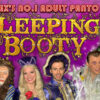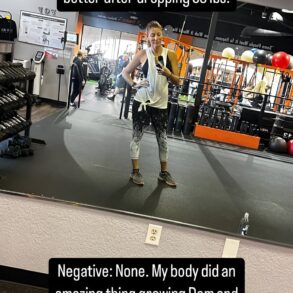In an effort to address the needs of Black and Latinx men in higher education, male resource centers have been looking to increase belonging, persistence, and graduation rates.
“You can see that there are gender disparities across higher ed — outcomes, enrollment — and generally find that men have worse outcomes than women,” says Dr. Su Jin Jez, CEO of California Competes, a nonpartisan policy and research organization focused on identifying solutions to California’s most critical higher education and workforce issues. There are 116 community colleges in California.
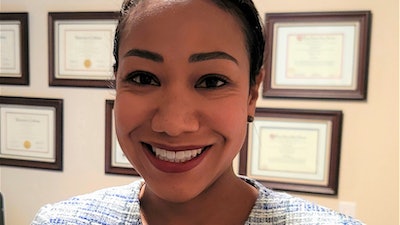 Dr. Su Jin Jez
Dr. Su Jin Jez
“The resource centers serve as one-stops with many tailored supports that can help male students of color find a sense of purpose because it typically will include things like mentorship, academic support, career exploration, leadership development opportunities, and peer support networks,” says Jez.
Addressing the need
Queensborough Community College (QCC), a two-year institution in the City University of New York system, conducted an equity audit that showed there were retention and graduation disparities for male students overall, with Black and Latinx male students disproportionately impacted. In mid-August, QCC officially opened its male/men’s resource center (MRC), which is dedicated to increasing the retention and graduation rates of male students, particularly self-identified Black and Latinx male students who are disproportionately impacted by equity gaps in student outcomes.
“The college recognized that the campus needed a safe space for males to get together, interact and learn from each other as well as to access resources,” says Jamal Biggs, director of the QCC MRC. “The center provides students with the opportunity to connect with resources that are available for them on campus, but to do it in a low stakes environment where there [isn’t] a lot of pressure for them to connect with these resources.”
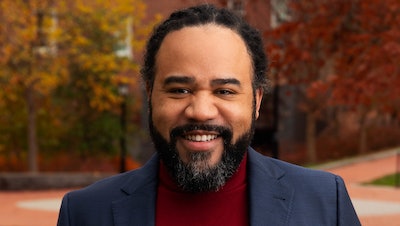



“One thing Compton College and President [Dr. Keith] Curry have done is look at data to inform decisions,” says Jez, who researched gender disparities between Black men and women when she was a professor of public policy and administration at California State University, Sacramento. “It helps to target intentional, really smart strategies at the institution.”
Dr. Roderick L. Carey is an assistant professor in the Department of Human Development and Family Sciences in the College of Education and Human Development at the University of Delaware. He conducts research on the school experiences of Black and Latinx adolescent boys and young men in urban contexts. He’s researched the behavior of high school students contemplating higher education.
“Many of them harbor various fears, trepidations or what I call college-going dilemmas,” says Carey. “Some of these dilemmas are shaped by cognitive factors around, ‘Am I actually intellectually or academically capable enough to do well in college?’ Some of that is certainly informed by their experiences in high schools, but other things are more social.”




“Boys and men are not socialized to express insecurities, fears, or doubts,” Carey says. “That’s why these centers could be very, very important. A place where men gather to heal, to reflect, to learn not only academics, but social-emotional skills, relational skills, and ways to be in a community where there are resources they can reach out to if they need them.”
Serving students
Lakeland Community College in Ohio created its MRC in 1996 after seeing the success of its women’s center. James Shelley, the center’s director since its inception, says he quickly learned that men need different approaches than women especially when it comes to expressing problems they may be facing. Programming has been developed to meet the needs of men of color, who now comprise about 50% of the students who access the center. This is notable because only about 15% of the overall student population are people of color.
Shelley tries to connect with as many new students as possible during orientation, particularly at-risk students, creating a personalized letter hand-delivered at the check-in area. If he doesn’t connect that way, he’ll call to ensure a personal connection. The MRC has several programs, including some for potential students still considering whether to enroll and another for students age 25 or older.
The Pathfinders Program at Lakeland’s MRC is specifically geared to the needs of African American men. The main event is a bi-weekly speaker series featuring Black male professionals who have been through college and have gone on to establish themselves in various career areas.
“There’s a double theme; one is to be motivational,” says Shelley. “The other is to focus on skills like networking that they’re not going to get in the classroom. How to connect with people who can help you advance your career and professional development and other soft skill areas.”
There is also a service component. Men taking part in Pathfinders speak with kids at Boys and Girls Clubs of Greater Cleveland.
Shelley says when comparing participants in the Pathfinders program who are Pell Grant recipients with Pell Grant recipients at the college who don’t participate, there is 10% to 11% higher retention among those who access the MRC. Also, students in Pathfinders who stop out (leave college before completion) are four times more likely to return than students who hadn’t participated.
Jez says one of the big challenges is making college structures and cultures work for Black and Latinx men. The signal needs to be sent early on that this is a place where these men can thrive. Continually collecting and analyzing data to assess programmatic success is essential. Community partnerships are very important as they can provide resources and additional supports for male students of color — holistic supports addressing not only academic needs but mental health, financial stability, and personal development.
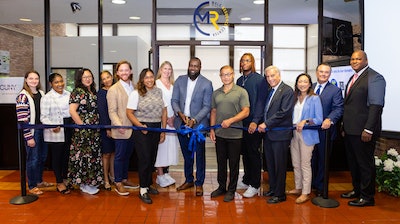



Signing up is simple with students able to opt-in to join the QCC MRC mailing list. If they wish, they can indicate what services they would consider beneficial. Biggs says giving students a clear voice has helped build a sense of belonging. The center provides peer mentorship as well as faculty mentorship. There are career, employment, and internship opportunities. Leadership and character development are also available.
“There is a lot of social support with students being able to interact and grow with each other and hold each other accountable,” says Biggs. “I think it is important for our mentees to know there are different paths in which you can achieve the same outcome.”
Long-term objectives
“If we can improve educational outcomes for males of color, we can help reduce income inequality and provide more opportunities for individuals and for underserved communities,” says Jez.
Biggs says that since the ribbon cutting event in August marking the launch of QCC’s MRC, there has been a boost in students interested in becoming peer mentors. There is a goal to bring the three-year graduation rate to 40% by Fall 2026.
“A lot of Black and Latino boys that I’ve been working with really struggle to see their future and to envision it, let alone determine steps to actualize their futures,” says Carey, whose website findingfutureselves.org addresses these issues. “What high schools and colleges can do is to work with Black and Latino boys and young men around how to align their college, career, and life ambitions.”
As men’s centers are being developed, Shelley hears from people around the country, including faculty, administration, and even students interested in how best to serve students. While some had difficulty getting funding for a center, he’s recently seen a shift. There is also concern that, with the recent attacks on diversity, equity, and inclusion, some of these centers will face additional scrutiny.
“When I started this program in ’96, I thought there would be 100 similar centers within 15 years, but it didn’t turn out that way,” Shelley says. “Now, it is getting attention.”
Carey says students are looking for a place where they can find a sense of belonging.
“I can see a tremendous amount of potential in men’s resource centers,” he says. “A Black male resource center can be a place where men of color come together to collectively theorize on their experiences. But it could also be a think tank for institutions to gather the insights of the men there to make the place better so they can see higher outcomes.”
This post was originally published on this site be sure to check out more of their content.

